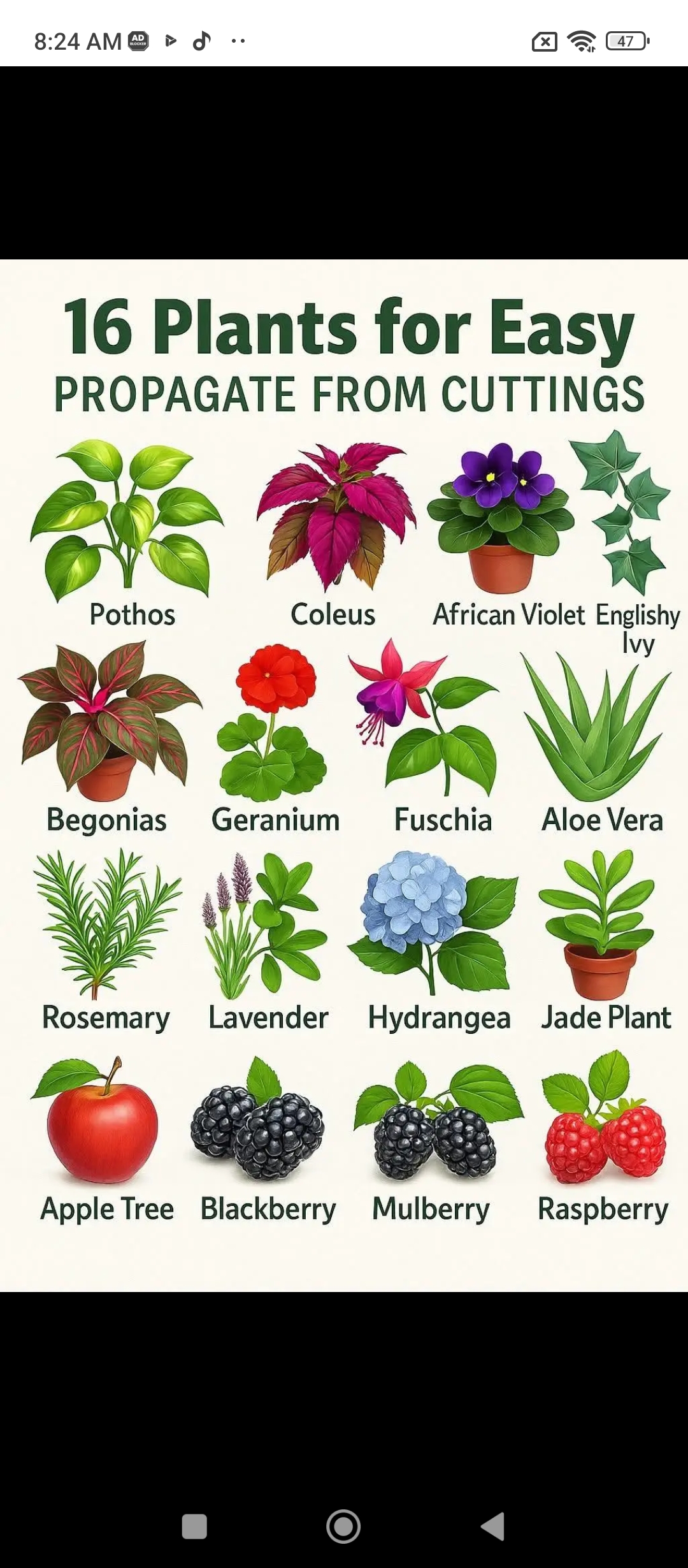Introduction and Origin
Plant propagation by cuttings is a time-honored horticultural method practiced for centuries around the world. This technique involves taking a portion of a plant—such as a stem, leaf, or root—and encouraging it to develop into a new, independent plant. This method gained popularity due to its simplicity, reliability, and the ability to preserve the genetic identity of the parent plant. Particularly valuable in regions with short growing seasons or limited access to seeds, cutting propagation offers gardeners a quick and sustainable way to multiply their favorite plants.
Cultural Significance
In many cultures, sharing plant cuttings is an act of generosity and community. From backyard gardeners in North America trading herbs with neighbors, to African families exchanging medicinal plant cuttings, the practice transcends geographic boundaries. Propagation by cuttings supports biodiversity, encourages local farming, and is often passed down through generations as a treasured skill. Today, this method supports sustainable gardening movements, urban farming, and even therapeutic horticulture.
Ingredients and Quantities
To propagate plants successfully, you’ll need:
- Healthy parent plant: Choose a disease-free plant with strong growth.
- Sharp scissors or pruning shears: For clean cuts.
- Rooting hormone (optional): Enhances root development.
- Potting mix: 2 parts peat moss + 1 part perlite or vermiculite.
- Small pots or containers: Clean with good drainage.
- Plastic bags or humidity dome (optional): Helps retain moisture.
- Water: Clean, preferably at room temperature.
Quantities depend on the number of cuttings taken. For every 5-10 cuttings, 1 liter of potting mix and a few drops of rooting hormone are typically sufficient.
Optional Additions
- Cinnamon: A natural antifungal alternative to rooting hormone.
- Aloe Vera Gel: Promotes healing and root stimulation.
- Willow Water: Contains natural rooting hormones.
- Grow lights or heat mat: To enhance root development in low-light or cooler climates.
Tips for Success
- Timing matters: Take cuttings during the plant’s active growing season (usually spring or early summer).
- Use sterile tools: Prevent infection and disease spread.
- Don’t overcrowd containers: Allow each cutting room to develop roots.
- Keep humidity high: Covering cuttings with plastic helps retain moisture.
- Avoid direct sun: Place in bright, indirect light.
- Be patient: Rooting can take days to several weeks, depending on the plant.
Instructions
- Select the Cutting: Choose a non-flowering, healthy stem. For most plants, 4–6 inches long is ideal.
- Cut and Trim: Using sterilized scissors, cut just below a node (where a leaf joins the stem). Remove lower leaves.
- Apply Rooting Hormone (Optional): Dip the cut end in rooting powder or gel.
- Plant in Potting Mix: Insert the cutting about 1–2 inches deep into pre-moistened potting mix.
- Create Humidity: Cover with a plastic bag or place in a humidity dome.
- Water and Wait: Keep the soil moist but not soggy. Check weekly for root development.
- Transplant: Once roots are established (usually after 2–4 weeks), transplant to a larger pot or directly into the garden.
Description
This guide is a practical companion for anyone looking to multiply their plants at home. It features a curated selection of easily propagated species, such as:
- Houseplants: Pothos, Coleus, African Violet, English Ivy, Jade Plant.
- Herbs: Rosemary, Lavender.
- Flowering Plants: Begonias, Geranium, Fuschia, Hydrangea.
- Fruit-bearing Plants: Apple, Blackberry, Mulberry, Raspberry.
- Succulents and Medicinal Plants: Aloe Vera.
Each plant type is presented with vibrant imagery and labeled clearly, simplifying identification and encouraging experimentation.
Nutritional Information (Metaphorically Speaking)
While plants from cuttings don’t come with nutritional facts, their value is immense:
- Sustainability: Reduces the need for commercial seed or nursery plants.
- Economy: Saves money on buying new plants.
- Mental Health: Promotes mindfulness and therapeutic engagement.
- Education: Offers hands-on learning about plant biology and ecology.
Conclusion and Recommendation
Propagation by cuttings is a low-cost, high-reward method accessible to beginners and seasoned gardeners alike. With a little care and the right environment, even the most novice green thumb can achieve success. Whether you’re expanding your houseplant collection or gifting rooted cuttings to friends, this technique builds a deeper relationship with nature and supports sustainable living.
Embracing Healthful Indulgence
Gardening through propagation isn’t just a chore—it’s a pleasure. Watching a cutting sprout roots is a gratifying reminder of nature’s resilience and generosity. By integrating this practice into your life, you’re not only nurturing plants but also cultivating patience, creativity, and well-being. Indulge in the joy of green growth—one cutting at a time.

